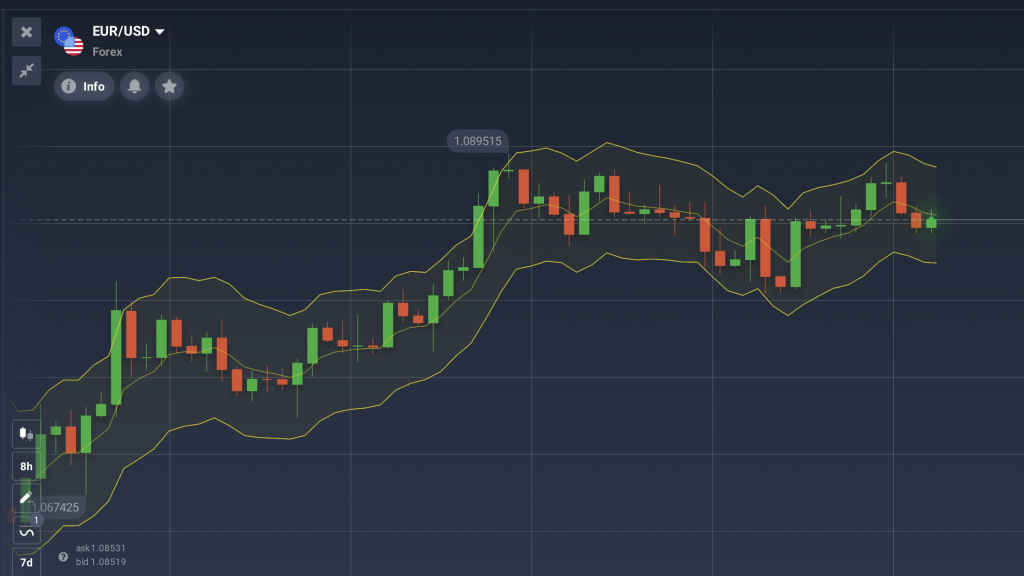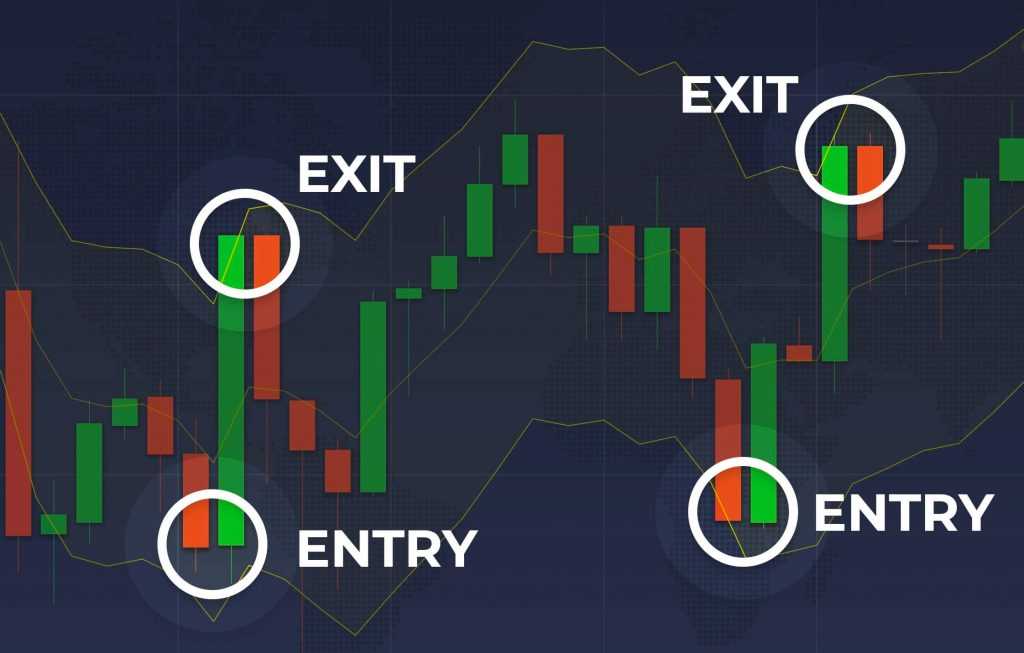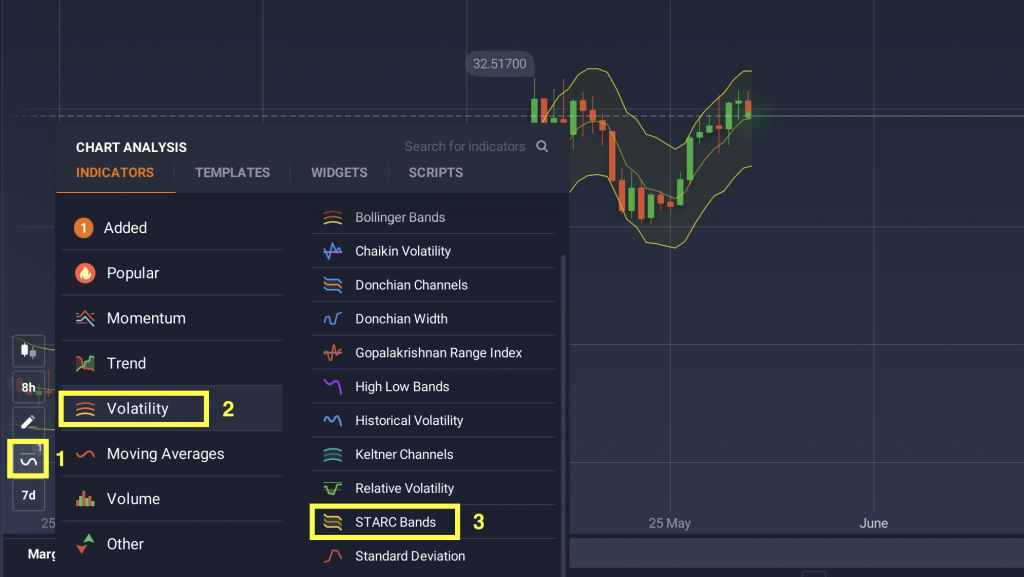Stoller Average Range Channel Bands, abbreviated as STARC Bands, is a unique technical analysis indicator. It is a combination of two distinct analysis tools that you probably already know and have used in the past: Simple Moving Average and Average True Range. Let’s dive in to discover how to trade the STARC bands strategy — a great trading method for any asset and experience level.
STARC bands: what are they?
What are Stoller Average Range Channel Bands? In a nutshell, STARC is a combination of three lines. The middle one is a Simple Moving Average, by default with a period of 5. The upper line (also called STARC Band+) is created by adding the ATR (average true range) to the moving average. The lower band (STARC Band-) is created by subtracting the ATR from the moving average. STARC, therefore, gives you an opportunity to turn two distinct indicators into an effective trading system.

A moving average is a line that consists of average asset prices over a set number of periods. ATR, in its turn, is a volatility indicator that shows how much an asset moves over a set number of periods. By combining them in the above-mentioned fashion (when ATR is added and subtracted from the moving average) you can get a channel that is later used for technical analysis purposes.
Like most indicators, STARC bands can help you determine optimal entry and exit points, which take place when the price leaves the channel outlined by the indicator.
How to use the STARC bands strategy in trading?
The general rules for using the indicator are the following.
☝️
Conversely, during the downtrend, traders may consider opening a SELL position when the price is close to the upper band and close it when the price reaches the lower band.
Here are some examples of potential entry and exit points offered by the STARC bands strategy.

There is one more thing you can do with STARC Bands indicator. When the price line moves above or below the channel created by the bands, a trend reversal is quite likely. In this case, STARC Band+ and STARC Band- lines can be treated as dynamic support and resistance levels. Note that no strategy, including this one, can yield successful results in 100% of cases.
Tips for the indicator set-up
Here’s an overview of the STARC bands indicator settings on IQ Option.
- Proceed to the traderoom and click the ‘Indicators’ button in the bottom-left corner of the screen.
- Go to the ‘Volatility’ tab and find STARC Bands in the list of available indicators.
- Click apply without changing the setting. The indicator is ready to use!

The period of the moving average and the distance between the outer bands and the central line can be adjusted to your liking, either bringing down the number of false alarms or increasing the indicator’s sensitivity.
STARC Bands strategy will best suit those looking for entry and exit points on a price chart. Now, when you know how to set it up and use it in trading, you can proceed to the trading platform to give this indicator a try!

